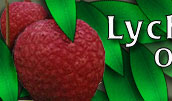The Soil Biology Primer
Chapter 5: SOIL PROTOZOA
By Elaine R. Ingham
THE LIVING SOIL: PROTOZOA
Protozoa are single-celled animals that feed primarily on bacteria, but
also eat other protozoa, soluble organic matter, and sometimes fungi. They
are several times larger than bacteria – ranging from 1/5000 to 1/50 of an
inch (5 to 500 µm) in diameter. As they eat bacteria, protozoa release
excess nitrogen that can then be used by plants and other members of the
food web.
Protozoa are classified into three groups based on their shape:
Ciliates are the largest and move by means of hair-like cilia.
They eat the other two types of protozoa, as well as bacteria.
Amoebae also can be quite large and move by means of a temporary
foot or “pseudopod.” Amoebae are further divided into testate
amoebae (which make a shell-like covering) and naked amoebae
(without a covering). Flagellates are the smallest of the
protozoa and use a few whip-like flagella to move.
|

|

|
Figure 1: Protozoa play an important role
in nutrient cycling by feeding intensively on bacteria. Notice the
size of the speck-like bacteria next to the oval protozoa and large,
angular sand particle.
Credit:
Elaine R. Ingham |
Figure 2: Bacteria ingested by an
amoeba.
Credit: No. 35 from
Soil Microbiology and Biochemistry Slide Set. 1976. J.P.
Martin, et al., eds. SSSA, Madison, WI |
|

|

|
Figure 3: Flagellates have one or two
flagella which they use to propel or pull their way through soil. A
flagellum can be seen extending from the protozoan on the left. The
tiny specks are bacteria.
Credit:
Elaine R. Ingham |
Figure 6: Ciliates are the largest of the
protozoa and the least numerous. They consume up to ten thousand
bacteria per day, and release plant available nitrogen. Ciliates use
the fine cilia along their bodies like oars to move rapidly through
soil.
Credit: Elaine R.
Ingham |
WHAT DO PROTOZOA DO?
 Protozoa play an important role in mineralizing nutrients,
making them available for use by plants and other soil organisms. Protozoa
(and nematodes) have a lower concentration of nitrogen in their cells than
the bacteria they eat. (The ratio of carbon to nitrogen for protozoa is
10:1 or much more and 3:1 to 10:1 for bacteria.) Bacteria eaten by
protozoa contain too much nitrogen for the amount of carbon protozoa need.
They release the excess nitrogen in the form of ammonium (NH4+). This
usually occurs near the root system of a plant. Bacteria and other
organisms rapidly take up most of the ammonium, but some is used by the
plant. (See figure for explanation of mineralization and
immobilzation.) Protozoa play an important role in mineralizing nutrients,
making them available for use by plants and other soil organisms. Protozoa
(and nematodes) have a lower concentration of nitrogen in their cells than
the bacteria they eat. (The ratio of carbon to nitrogen for protozoa is
10:1 or much more and 3:1 to 10:1 for bacteria.) Bacteria eaten by
protozoa contain too much nitrogen for the amount of carbon protozoa need.
They release the excess nitrogen in the form of ammonium (NH4+). This
usually occurs near the root system of a plant. Bacteria and other
organisms rapidly take up most of the ammonium, but some is used by the
plant. (See figure for explanation of mineralization and
immobilzation.)
Another role that protozoa play is in regulating bacteria populations.
When they graze on bacteria, protozoa stimulate growth of the bacterial
population (and, in turn, decomposition rates and soil aggregation.)
Exactly why this happens is under some debate, but grazing can be thought
of like pruning a tree – a small amount enhances growth, too much reduces
growth or will modify the mix of species in the bacterial community.
Protozoa are also an important food source for other soil organisms and
help to suppress disease by competing with or feeding on pathogens.
WHERE ARE PROTOZOA?
Protozoa need bacteria to eat and water in which to move, so moisture
plays a big role in determining which types of protozoa will be present
and active. Like bacteria, protozoa are particularly active in the
rhizosphere next to roots.
Typical numbers of protozoa in soil vary widely – from a thousand per
teaspoon in low fertility soils to a million per teaspoon in some highly
fertile soils. Fungal-dominated soils (e.g. forests) tend to have more
testate amoebae and ciliates than other types. In bacterial-dominated
soils, flagellates and naked amoebae predominate. In general, high
clay-content soils contain a higher number of smaller protozoa
(flagellates and naked amoebae), while coarser textured soils contain more
large flagellates, amoebae of both varieties, and ciliates.
NEMATODES AND PROTOZOA
Protozoa and bacterial-feeding nematodes compete for their common food
resource: bacteria. Some soils have high numbers of either nematodes or
protozoa, but not both. The significance of this difference to plants is
not known. Both groups consume bacteria and release NH4+.
BUG BIOGRAPHY: Soil Dwelling Vampires
 Most protozoa eat bacteria, but one group of
amoebae, the vampyrellids, eat fungi. The perfectly round holes drilled
through the fungal cell wall, much like the purported puncture marks on
the neck of a vampire’s victim, are evidence of the presence of
vampyrellid amoebae. The amoebae attach to the surface of fungal hyphae
and generate enzymes that eat through the fungal cell wall. The amoeba
then sucks dry or engulfs the cytoplasm inside the fungal cell before
moving on to its next victim. Most protozoa eat bacteria, but one group of
amoebae, the vampyrellids, eat fungi. The perfectly round holes drilled
through the fungal cell wall, much like the purported puncture marks on
the neck of a vampire’s victim, are evidence of the presence of
vampyrellid amoebae. The amoebae attach to the surface of fungal hyphae
and generate enzymes that eat through the fungal cell wall. The amoeba
then sucks dry or engulfs the cytoplasm inside the fungal cell before
moving on to its next victim.
Vampyrellids attack many fungi including root pathogens, such as
Gaeumannomyces graminis, shown in the photo. This fungus attacks wheat
roots and causes take-all disease.
>Go
to next chapter: Soil Nematodes
<Return
to the Soil Biology Primer home page
Back To Lychee Info
|

